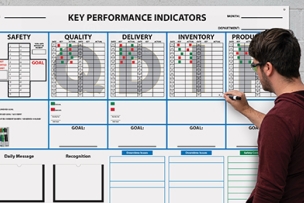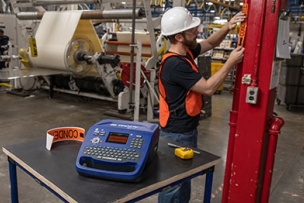Unfortunately, protective eyewear often isn’t used because of fit and comfort issues. Workers complain the eyewear is uncomfortable or fogs up—something that is especially true when workers must wear face masks inside facilities.
What, then, is needed to ensure your workers have the appropriate head, eye and face protection equipment? Here’s a breakdown of some of the requirements and options.
Read more: Fogged-up Glasses: 5 Ways to Keep Eye Protection From Fogging While Wearing a Mask
Eye Protection: Safety Glasses and Goggles
A significant amount of workplace eye injuries could be prevented by employees wearing the appropriate eye protection.
Yet understanding what kind of personal protective equipment to use that meets the OSHA standard for eye and face protection can be challenging.
Ensuring worker safety includes conducting a workplace hazard assessment and providing adequate training for all workers who require eye and face protection.
OSHA’s standard notes that “the employer shall ensure that each affected employee uses appropriate eye or face protection when exposed to eye or face hazards from flying particles, molten metal, liquid chemicals, acids or caustic liquids, chemical gases or vapors, or potentially injurious light radiation.”
The rule also states that workers must “use eye protection that provides side protection when there is a hazard from flying objects.” And prescription lenses must be either incorporated into the eyewear itself or must fit below the protective lenses.
Employers must also use equipment with filter lenses “that have a shade number appropriate for the work being performed for protection from injurious light radiation.” You can see a list of appropriate shade numbers for various operations here.
Safety goggles worn for protection against particulates (dust and debris) are different from those worn to protect a wearer from chemical splashes. The former has openings at the top of the goggle to allow air to flow through and could let fluids enter, too. Splash-resistant goggles, on the other hand, have venting that will not allow liquids to enter.
The American National Standards Institute/International Safety Equipment Association (ANSI/ISEA) produces a consensus standard for protective eyewear.
Its most recent version is the ANSI/ISEA Z87.1-2020 standard, which specifies the design, performance conditions and marking of safety eye and face products. The standard is incorporated into OSHA regulations for PPE.
For those who need help selecting the correct eye and face protection for a task, OSHA provides an online eTool that aids in the selection of eye and face protective equipment.
Read more: How to Find the Right Protective Eyewear
Face Protection: Face Shields, Respirators and Face Coverings
Since the start of the pandemic, face coverings and masks have become essential tools in the fight against COVID-19.
For worker safety, it’s important to understand the differences between face coverings, masks and respirators—and the function each item serves.
A respirator is worn over the nose and mouth to protect the wearer from hazardous materials in the surrounding air. It is certified by the National Institute for Occupational Safety and Health (NIOSH) and typically offers a high degree of protection.
Respirators include N95 respirators, which are designed to achieve close fit to the face and filter out 95 percent of airborne particles. Surgical N95 respirators also achieve a close facial fit and 95 percent filtration efficiency but also offer fluid resistance.
A standard face mask is usually more protective than a cloth face covering, but it won’t generally offer a high level of protection because most are not designed nor approved to protect against airborne particles. A face mask’s filtration effectiveness varies widely.
A cloth face covering helps keep the particles you exhale from escaping into the air around you but is not considered PPE, as it will not adequately protect you from particles already in the air, such as those carrying viruses.
Other protective barriers include face shields, which are plastic barriers that guard against splashes and direct coughs or sneezes. They are more comfortable than masks but provide minimal protection against small droplets.
Read more: Understanding the Key Differences Between Face Coverings, Masks, and Respirators
Head Protection: Hard Hats and Protective Helmets
Head protection for workers is a key part of any company’s safety program.
OSHA’s 29 CFR 1910.135 standard requires that workers wear a protective helmet when there is a potential for injury from impacts, falling or flying objects, or from an electrical shock.
Employers must therefore provide hard hats and ensure that employees wear protective coverings in the following situations:
- When there is a potential for injury to the head from falling objects.
- When workers could strike their heads against fixed objects, such as piping or other equipment.
- When workers’ heads could make contact with electrical hazards.
The ANSI Z89.1 standard defines two types of hard hats and three classes based on their level of electrical hazard protection.
Hard hats include an interior suspension system that helps to absorb the impact from above. They are typically available with four- or six-point suspension systems, with the force dispersion increasing with the number of suspension points.
To ensure a secure fit, make sure there is a small amount of breathing room between the internal suspension structure and the hat’s hard shell.
Read more: Hard Hat Protection Basics
How are you making sure your employees keep wearing the appropriate head, eye and face protection at work? Share your thoughts in the comments below.





Talk to Us!
Leave a reply
Your email address will not be published. Required fields are marked *